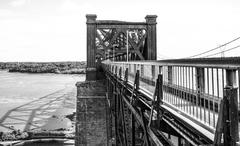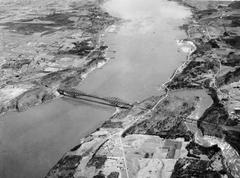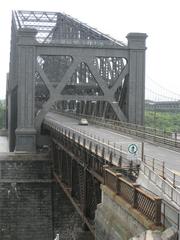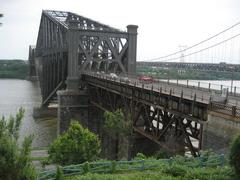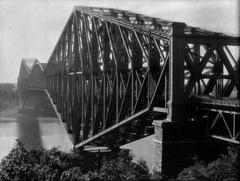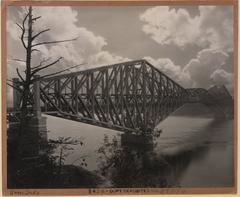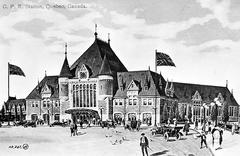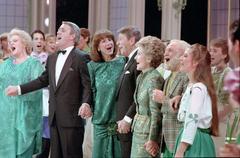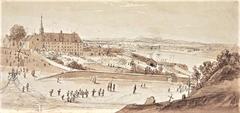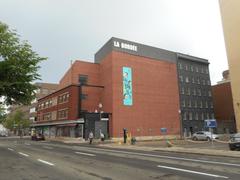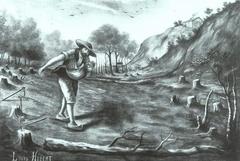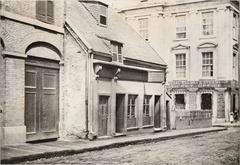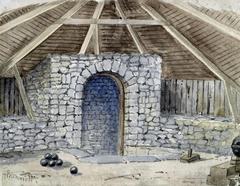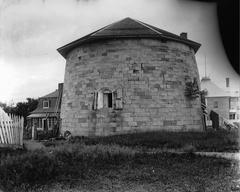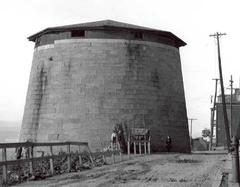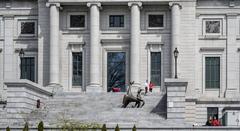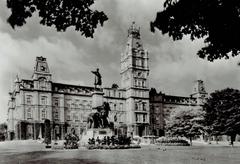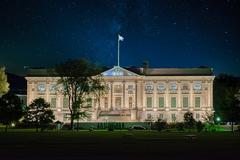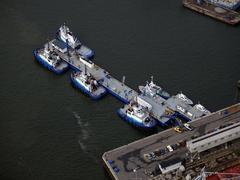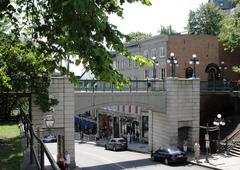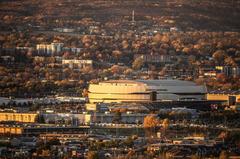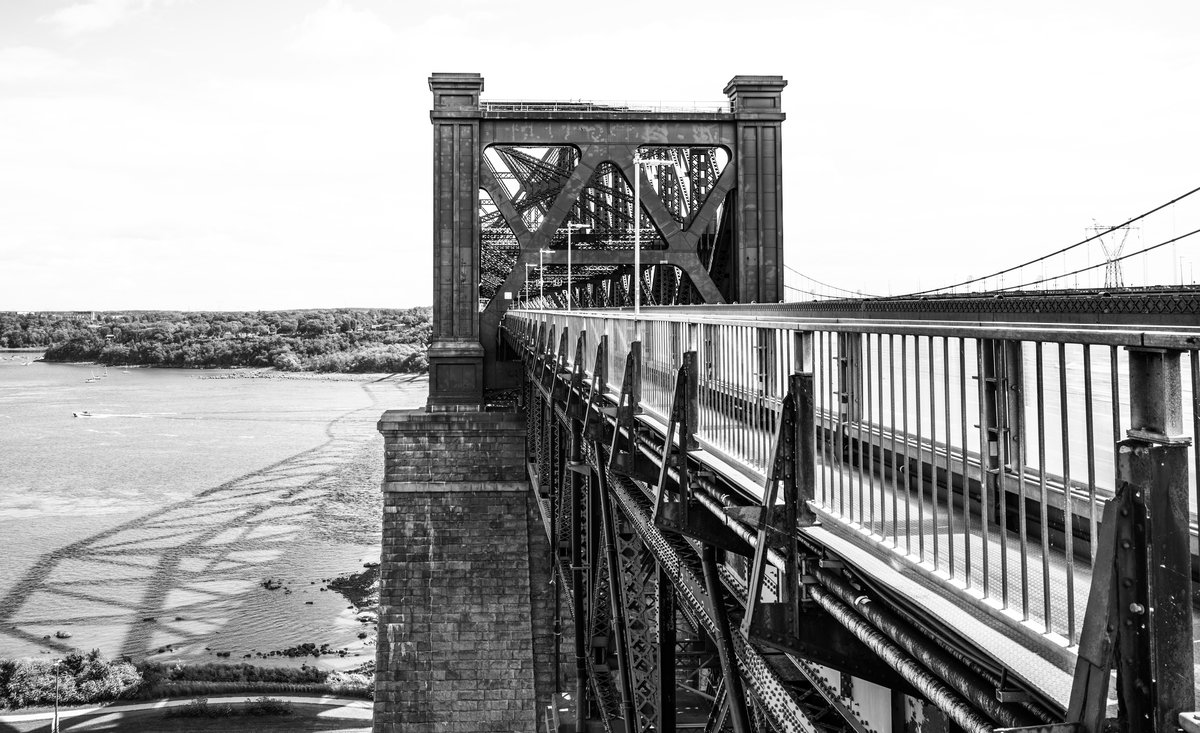
Quebec Bridge Visiting Hours, Tickets, and Travel Guide – Quebec City
Date: 14/06/2025
Introduction: The Quebec Bridge – A Symbol of Engineering and Resilience
The Quebec Bridge (Pont de Québec) is a world-renowned engineering marvel and a profound symbol of Quebec City’s history, resilience, and ingenuity. Spanning the powerful St. Lawrence River, this cantilever bridge boasts the world’s longest cantilever span at 549 meters (1,800 feet)—a record it has held since 1917 (HistoricBridges.org; Parks Canada). Its storied past includes ambitious design, tragic collapses, and triumphant completion, making it not just a transportation link but a national historic site and a testament to human perseverance.
Today, the Quebec Bridge connects Quebec City to Lévis, supporting road and rail traffic, as well as pedestrians and cyclists, all while offering breathtaking vistas of the St. Lawrence and the cityscape. Visitors are drawn by its structural grandeur, historical narrative, and the memorials honoring workers who lost their lives during construction (The Canadian Encyclopedia; National Trust Canada). This guide delivers all the essential information for exploring the bridge: visiting hours, ticket details, accessibility, guided tours, and nearby attractions.
Table of Contents
- Introduction
- Historical Overview
- Visiting the Quebec Bridge
- Nearby Attractions
- Frequently Asked Questions (FAQ)
- Visitor Tips
- Conclusion
- References
Historical Overview
Early Proposals and the Need for a Bridge
By the late 19th century, the need for a permanent crossing over the St. Lawrence River near Quebec City was clear, as ferries and winter ice bridges were often unreliable (HistoricBridges.org; TravelAsker). Engineering proposals began in 1884, but it wasn’t until the turn of the century that the project gained momentum.
Construction Tragedies
Construction commenced in 1900 under engineer Theodore Cooper. The first attempt ended in disaster on August 29, 1907, when a design flaw caused the unfinished bridge to collapse, killing 75 workers, many from the Mohawk community (The Canadian Encyclopedia; Iron Ring). A second collapse occurred in 1916, when the suspended center span fell during installation, resulting in 13 more fatalities (ASCE). These tragedies led to global reforms in engineering oversight and safety.
Engineering Innovations
Revised under a board of government engineers, the bridge was ultimately completed in 1917. Its main cantilever span measures 549 meters (1,800 feet), making it the longest of its kind worldwide (ASCE; Wikipedia). The bridge’s steel truss design, use of nickel steel, and innovative K-truss structure set benchmarks for future projects (Canada.ca). Over 66,000 metric tons of steel were used (Canada.ca), and the construction methods—such as lifting the enormous center span with hydraulic jacks—were considered revolutionary (Pressbooks BCcampus).
Completion and Dedication
The bridge was officially dedicated by the Prince of Wales (later King Edward VIII) on August 22, 1919. It was first used for rail traffic in 1917 and later adapted for vehicular and pedestrian use (HistoricBridges.org).
Cultural and Architectural Significance
The Quebec Bridge is not only an engineering feat but also a national icon. Its silhouette is a defining feature of Quebec City’s skyline and a source of community pride (National Trust Canada). It is compared with global landmarks like London’s Tower Bridge for both its technical and symbolic significance. The absence of obstructive fencing allows for unobstructed views, making it a favorite for visitors and photographers.
Preservation and Restoration Efforts
Recognized as a National Historic Site in 1995, the bridge has been the focus of extensive restoration. In 2024, the federal government assumed ownership and committed to long-term preservation, allocating approximately $40 million annually toward rehabilitation (GTA Today). Ongoing restoration ensures its role as a vital crossing and a historical monument.
Memorials and Commemoration
Memorials near the bridge and annual tributes at the Kahnawake Mohawk Territory honor the workers lost during construction. Informational plaques and displays along the approaches provide powerful context for visitors (National Trust Canada).
Visiting the Quebec Bridge
Visiting Hours and Accessibility
- Hours: The bridge is open to vehicles, pedestrians, and cyclists year-round, 24/7. However, for safety and the best views, visit during daylight hours (Québec Cité).
- Tickets: Access is free for pedestrians, cyclists, and vehicles. Guided tours or special events may require advance booking.
- Accessibility: Smooth walkways and ramps make the bridge accessible for wheelchairs and strollers. Public transit and parking are available on both city sides.
Guided Tours and Events
Seasonal guided tours are offered by local heritage organizations, providing in-depth insights into the bridge’s history and engineering. The annual Quebec Bridge Festival and other events feature performances, educational programs, and photography contests (Quebec City Tourism).
Best Photography Spots
- On the Bridge: The pedestrian walkway offers panoramic views of the river, city, and adjacent Pierre-Laporte Bridge.
- Nearby Parks: Parc de la Plage-Jacques-Cartier and the south shore promenade are perfect for photos, especially at sunrise and sunset.
- From the Water: The Quebec-Lévis ferry offers unique perspectives of the bridge and city skyline (Dream Big Travel Far Blog).
Nearby Attractions
- Old Quebec (Vieux-Québec): A UNESCO World Heritage Site, filled with historic architecture and cobblestone streets.
- Plains of Abraham: Site of a pivotal battle and now a picturesque urban park.
- Lévis Forts: Historic military sites on the south shore.
- Aquarium du Québec: Family-friendly attraction near the bridge.
- Promenade Samuel-De Champlain: Scenic riverfront walkways and parks.
Frequently Asked Questions (FAQ)
Q: Do I need tickets to access the Quebec Bridge?
A: No. Pedestrian, cyclist, and vehicle access is free. Tickets may be required for guided tours or special events.
Q: What are the visiting hours?
A: The bridge is open year-round, 24/7, but daylight hours are recommended for safety and best views.
Q: Is the bridge accessible for wheelchairs and strollers?
A: Yes, with ramps and smooth walkways at access points.
Q: Are guided tours available?
A: Yes, offered seasonally by local organizations and tourism operators.
Q: Can I cycle across the bridge?
A: Yes, designated cycling lanes connect to regional bike paths.
Q: Where are the best spots for photography?
A: On the pedestrian walkway, nearby parks, and from the Quebec-Lévis ferry.
Visitor Tips
- Best Time: Spring through fall offers pleasant weather. Winter visits require warm clothing due to wind and cold.
- Footwear: Wear comfortable shoes for walking.
- Weather: Check local forecasts, as the bridge can be windy.
- Language: French is the primary language, but English is widely understood in tourist areas.
- Safety: Stay within marked lanes and observe all signs, especially in winter.
Conclusion
The Quebec Bridge is a must-visit landmark in Quebec City, offering a blend of breathtaking views, historical depth, and engineering wonder. Whether crossing on foot, by bike, or in a vehicle, you’ll experience a living story of human resilience and innovation. Enhance your visit by exploring nearby attractions, joining a guided tour, or simply pausing to reflect at one of the bridge’s memorials.
For the latest updates on events, tours, and preservation efforts, consult the official Quebec City Tourism website or local visitor centers. Download the Audiala app for guided audio tours and insider tips.
Plan your journey and be inspired by a century-old icon that continues to shape Quebec’s identity and heritage.
References
- HistoricBridges.org – Quebec Bridge
- ASCE – Historic Landmarks: Quebec Bridge
- Wikipedia – Quebec Bridge
- The Canadian Encyclopedia – Quebec Bridge Disaster
- Parks Canada – National Historic Site
- National Trust Canada – The Quebec Bridge
- GTA Today – Preserving Quebec Bridge
- Canada.ca – Quebec Bridge By the Numbers
- Quebec City Tourism Official Website
- TravelAsker – Purpose of the Quebec Bridge
- Dream Big Travel Far Blog – Things to Do in Quebec City
- New Canadian Life – Lévis to Quebec City Bridge
- Pressbooks BCcampus – Quebec Bridge 1907 Disaster
- Iron Ring – Background
